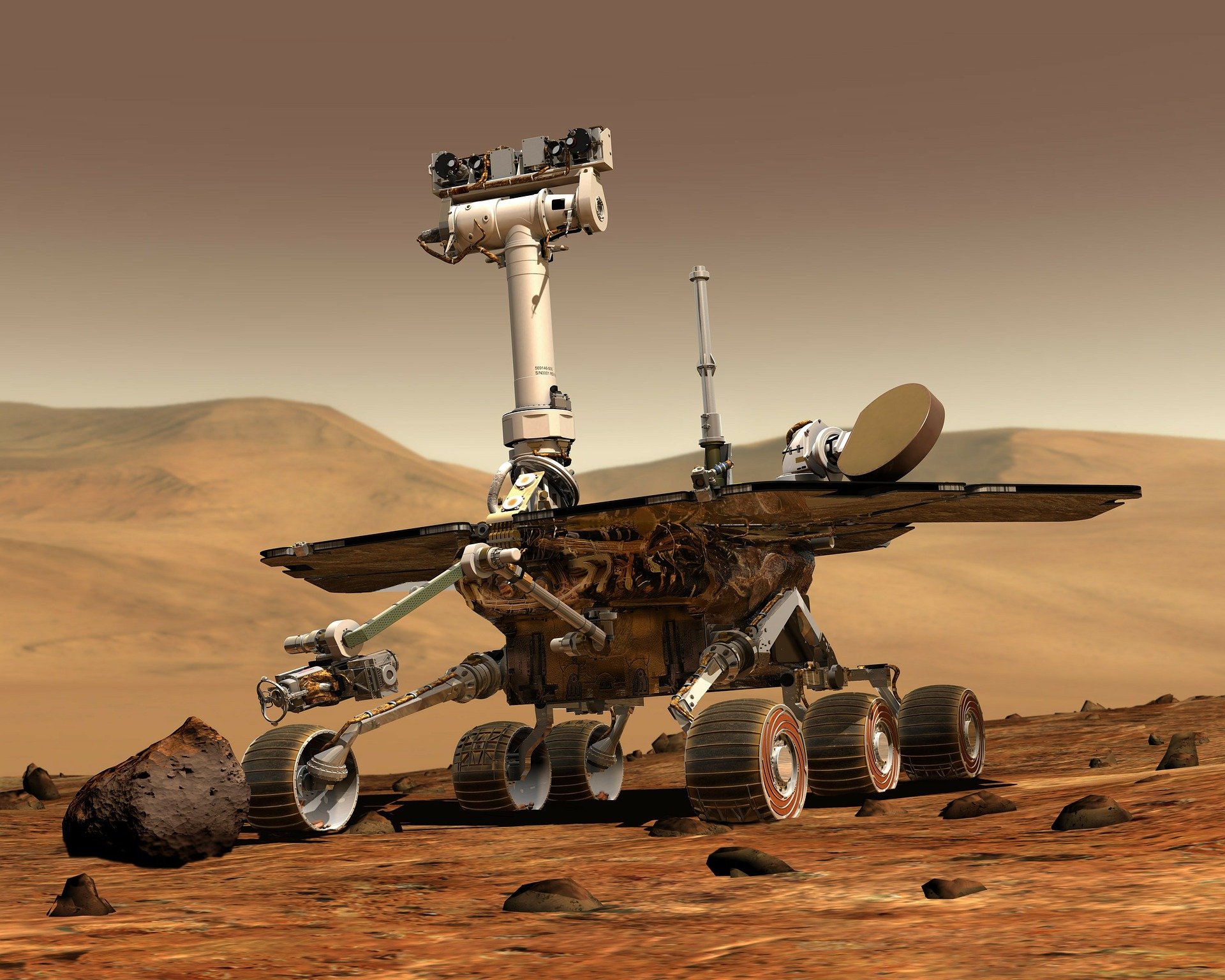

Back in 2017, as the Curiosity rover was collecting a dirt sample from Mars’ Bagnold Dune, the space vehicle experienced an unexpected malfunction: Its drill suddenly went out of service. Rather than scrap the mission, NASA scientists tweaked the sampling technique such that the rover placed the dirt sample into cups containing a chemical cocktail, rather than empty cups. Surprisingly, this type of sampling—known as a wet sampling experiment—helped scientists identify organic molecules that had not yet been seen on the red planet.
The Curiosity rover has been searching for biosignatures, or indicators of previous life on Mars, since it landed on the planet in 2012. Today, Mars is mostly made up of dirt, dust, and gas, but long ago it may have been home to lakes, rivers, and microbial life. The sample Curiosity collected from the Bagnold Dune on Mars did not have biosignatures on it, which is evidence of past life, but it did identify two noteworthy compounds: ammonia and the organic compound, benzoic acid. Ammonia was notable because though not an organic compound, the researchers considered it a possible indicator of a biosignature.
Organic molecules, like benzoic acid, are particularly good indicators of biosignatures, which are chemicals that could have come from past life on Mars. These findings also indicate that this method of collecting samples is promising. The results of the wet chemistry experiment were published on Monday in a study by the NASA team behind it in the journal Nature Astronomy.
[Related: Mars may be too small to have ever been habitable]
Organic materials, including thiophenes, benzene, toluene, and small carbon chains have previously been found on the Red Planet, coming from sedimentary samples. These past compounds were found using Curiosity’s specialized ovens that work to heat sediment and release these molecules. Ammonia and benzoic acid have never been found before with this method, though. In the wet experiment, Curiosity dumped the dirt into a mix of chemical reagents which triggered a chemical reaction that allowed researchers, back in the lab, to figure out what molecules were present.
Researchers still need to figure out where and how exactly these molecules came about. The study indicates that the molecules could stem from geological processes on the planet, but could also potentially be indicators of past habitability. The dune where the sample was collected sits in Gale Crater, a spot on Mars suspected to have previously been filled with water, a good spot to look for signs of former life. Researchers are awaiting the launch of the European Space Agency’s ExoMars expedition to have more samples to work with.
In the meantime, this unexpected find helps put together a clearer understanding of the history of Mars, as bit by bit, scientists continue to uncover the Red Planet’s secrets.
Correction, 11/4/2021: A previous version of this story mistakenly noted that ammonia, one of the two compounds identified in the Mars’ dirt sample, was an organic molecule when, in fact, it is an inorganic compound. The ammonia discovery was still notable, though, because scientists considered it a possible indicator of a biosignature as it is produced in the breakdown of organic matter.